You'll love it if:
- You love story driven games with deep lore
- You enjoy tactic driven combat with a lot of room for creativity
- You want to play in a reactive world where your decisions matter
Not for you if:
- You hate turn based combat and DnD with a passion and
- You prefer hack'n'slash or FPS games with minimal to no plot
It took some time, but the wait was well worth it. Larian Studios’ CRPG Baldur’s Gate 3 has been released and let me tell you, it’s a smashing success. I believe Baldur’s Gate 3 has pushed the boundaries of what a Computer Role-Playing Game (CRPG) can do, and showed players what single-player games can be when made by a studio that truly cares for the player experience. It takes place in the Dungeons and Dragons universe of the Forgotten Realms and follows the player’s choice of a band of characters and their individual plotlines. While offering an amazing experience the game also has issues and bugs. These however are more technical issues than immersion breaking or gameplay impairing, and for the most part, these are very minor.
At the time of writing this review, I’ve played Baldur’s Gate 3 for 45 hours doing as much of the content and quests as possible, and have made my way well into Act 3 of the game. The size and scope of the game are immense and we’ll go further into breaking down in-game consequences and ripple effects of your character’s actions in detail. This is a game with great replay value in that even doing as much as I could to see everything, I could tell there were several unexplored plotlines and branching story paths to explore in future playthroughs.
My own playthrough was played on PC and the game is available both on PC and Steam Deck, with a PlayStation release set for early September. This review will include content from the very beginning up until the early sections of Act 3, so be aware of potential spoilers. Additionally, due to the sheer scope of the game, I will be writing a second review after completing the game and running multiple playthroughs in the near future. With all that aside, let’s get into our review of Baldur’s Gate 3.

Tl;DR
Baldur’s Gate 3 is an immersive computer role-playing game with more of an inclination towards the roleplaying experience while still providing challenging battles and scenarios throughout the game. Where the game shines the most is in the character development and decision trees that branch throughout the game, making sure that no two playthroughs are ever really the same. Baldur’s Gate 3 is a finely crafted adventure that tells a deep and compelling story supported by a diverse cast of interesting and unique characters.
The Campaign of Baldur’s Gate 3
The overall story of Baldur’s Gate 3 starts with your chosen character having been kidnapped on a Mindflayer Nauteloid. You and the other playable characters become infected with Mindflayer tadpoles and are initially on a search for a cure before you turn into a Mindflayer yourself. What follows is a series of events learning about the tadpoles, the delayed changing process, and a mysterious cult of The Absolute. This culminates in your unlikely band of adventures teaming up, or not should you so choose, to save the eponymous city of Baldur’s Gate and the world.
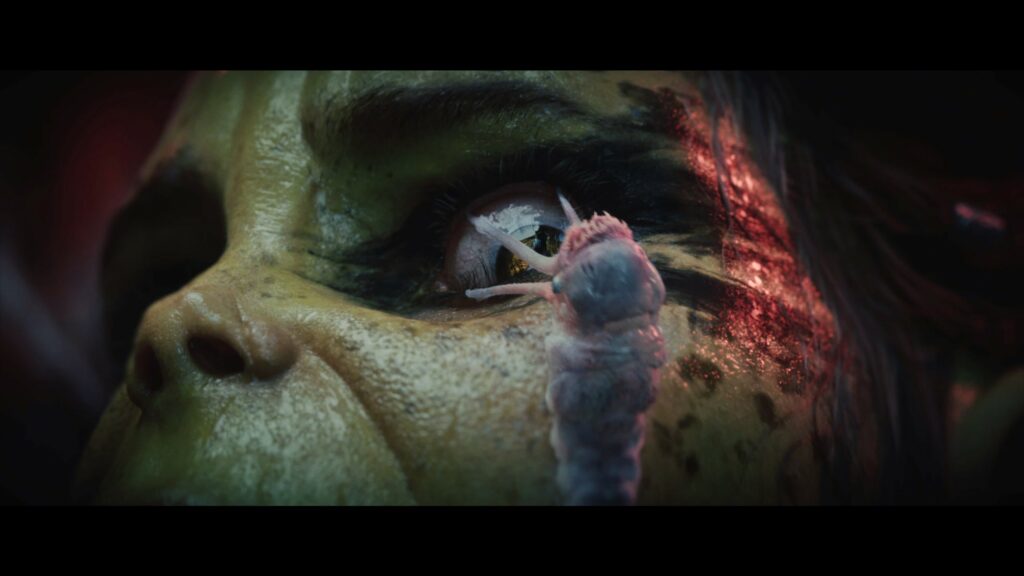
When creating your character, you have the option to play as one of the “Origin Characters” or a character of your own creation. Origin characters like in Divinity Original Sin 2 have their own backstories and personalities. The developers recommend not using an Origin Character as the main character for your first playthrough for the simple reason you have yet to experience who they are and what their personalities are. You can however have them in your party throughout the game. While in Divinity it seems like it was almost intended to play as an origin character, here playing as your own player character feels like the much more intended player experience.
Over the course of the game, you meet the other Origin Characters and can add them to your “camp.” You can only have up to four characters in your party at a time but can swap them for others in your camp throughout the game. These characters have unique dialogue and plot lines to explore throughout Baldur’s Gate and add so much depth and detail to the story and the consequences of becoming infected. For example, Astarion is on a mission of vengeance to overthrow his former master, and Shadowheart is on a journey of self-discovery and a mission for her Goddess Shar.
There is a final Origin Character option called The Dark Urge where you create your own player character with their own mysterious backstory. Your journey is to discover your own history, and the detail of your character’s lack of memories helps you sculpt the character into your own, as well as shape your character to how you want them to be. This is an Origin Character that enables you to sculpt your experience because your character has a clean slate to start with.
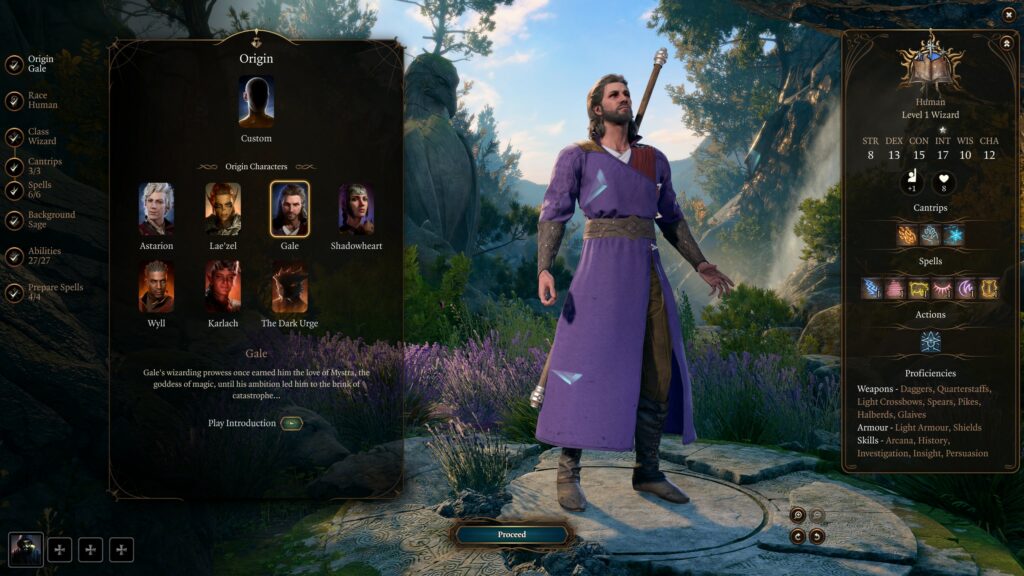
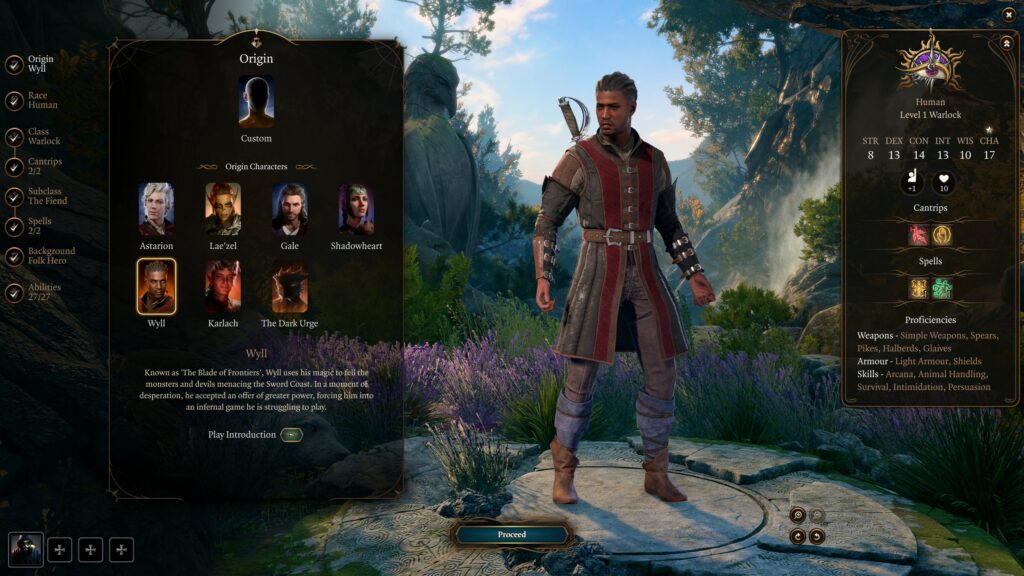
In terms of connection to the previous games, from my experience so far, I can confidently say that the story for this game does indeed connect to the events of the previous games in the series and builds on the lore. All in all, the story is beautifully created with hundreds of if not thousands of branching dialogue options. The detail in creating this world is top notch and if you’re looking for an immersive game with deep story, this is definitely the game for you.
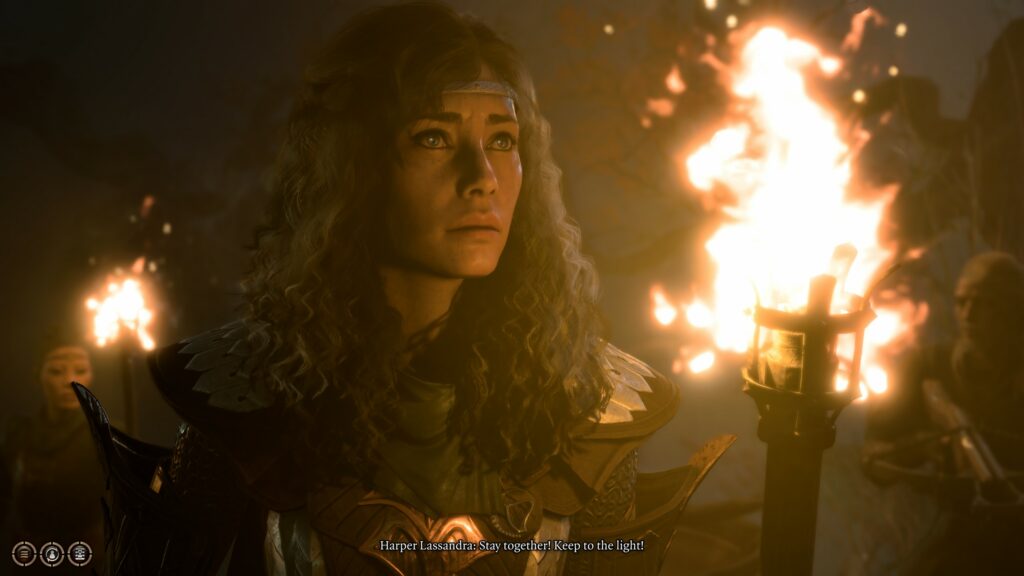
Everything You Need to Know for Baldur’s Gate 3 Character Creation
One thing I’ve noticed among playing with my friends and discussing the game is just how much of my Dungeons and Dragons knowledge I took for granted and utilized while playing Baldur’s Gate. As mentioned earlier, when making your character you can choose one of the existing origin characters to play as. You won’t be able to change their appearance but you can in fact alter their stats and even change their class in the game. Outside of choosing a pre-existing character, Baldur’s Gate 3 bases its game design on Dungeons and Dragons 5th edition rules. We’ll soon have in-depth guides on the classes and their specifics so make sure to stay tuned.
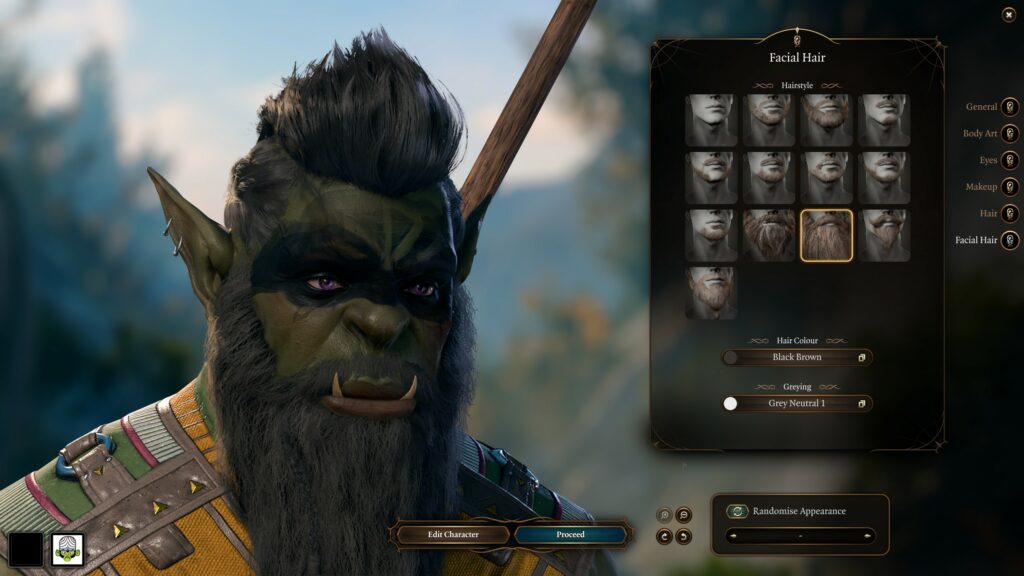
Races
When creating your character, you first have your choice of race. Each race adds its own special benefit to your character as well as influencing how the world around you treats your main character. Humans and elves for example are commonplace in the setting of Baldur’s Gate and NPCs will treat you mostly as they would anyone else. You may even have unique dialogue options for your subrace of elf. Choosing a half-orc or a Githyanki may invoke more hostile behaviors initially towards your player character. The Gith especially as their race originates from another plane of existence and are almost alien in nature to the inhabitants of Baldur’s Gate.
In addition to in-game dialogue, your race also influences your character’s abilities. Elves for example can take a cantrip of their choice from a curated list. We will cover cantrips shortly when we go over spells. Half-orcs don’t get an extra spell but in their case when they attack and score a critical hit, they deal additional damage to their target, and additionally the first time they are reduced to 0 hit points they drop to one instead. The different abilities of the races can influence what class you decide to play as.


Classes
The next part of character creation in my opinion is the most important, choosing your class. There are 12 classes present and each has its own subclasses to choose from either immediately or unlocked later through character progression. Classes range from full martial classes, those that use melee combat and lack spells, to full casters. There are even classes that are dubbed “half-casters” for their ability to utilize both melee prowess and spellcasting in combination, such as the Paladin or Cleric.

When choosing your class, you are given the option throughout the game to multi-class and acquire levels in another class to have unique and interesting character builds. To keep things simple, I’ll briefly cover the classes’ general abilities and what they aim to do, but in the future, you can expect an in-depth class breakdown covering each’s strengths and weaknesses.
Starting off our list is the Barbarian Class. This class utilizes its unique Rage mechanic to gain power in battle at the cost of not being able to cast complex spells. Similar to the Barbarian is the Fighter class that focuses on close-range combat, but has mastery of all weapons from daggers to bows as well.
For those who enjoy melee combat but perhaps not frontline fighters, we have the rogues and monks that specialize in dashing in and out of combat. Rogues along with Hunters can utilize bows and other ranged weapons. Hunters especially often get the aid of an animal companion.
For the players who like a more magical approach in their main class, we have our Wizards, Warlocks, and Sorcerers. Wizards and Sorcerers often utilize spells for massive AOE damage and area control. That’s not to say they can’t also utilize spells for area control. Clerics and Druids utilize spells in a more support-like nature. Warlocks are special in that they gain their powers through a pact with a greater being, granting them powers and special abilities. Warlocks are adept in casting from range but also have the ability to infuse weapons with magical abilities or summon pact familiars.
Spells in Baldur’s Gate 3 operate using Spell Slots from the Dungeons and Dragons rules. As you begin the game you have access to “Cantrips” which are basic spells you always have at your disposal. These are low-level spells that don’t expend resources and can always be cast. As you level up in Baldur’s Gate you unlock higher-level spells and gain “Spell Slots” for those spells. These spell slots act as an expendable resource to cast spells and are regained on a long-rest, or short rest for some classes. To cast a spell of 1st level or higher, the character must expend one of their “Spell Slots” to do so, and when no slots remain, you become unable to cast that spell until they are regained.
Paladins and warlocks are often regarded as “half-casters”. These classes have proficiency in weapons and heavier armor and have special skills to supplement their melee ability. They can cast spells much like other classes, but not the power and extent of the “full-casters”.
Finally, we have the Bard. The bard can be played in multiple different ways and acts as a jack of all trades. Bards have good skill proficiency and can do a lot of different tasks, and often act as a good support role in a party inspiring the other character and improving their abilities. Their subclasses offer routes of playing to focus on spellcasting, swordplay, or most popularly, as the face or leader of a party.

Ability Scores and Skill Proficiencies
In Baldur’s Gate 3, your character’s abilities are for the most part determined by your ability scores. These are essentially your stats. The abilities you have are Strength, Dexterity, Constitution, Intelligence, Wisdom, and Charisma. These abilities govern almost everything your character does, from attack accuracy and damage to how well you can pickpocket or deceive NPCs.
When creating your character you have a specific number of points to allocate across these stats. Different classes utilize certain stats more and have other stats they hardly use at all. Fighters and Barbarians enjoy having high strength whereas rogues and monks like dexterity.
These stat points additionally affect different skills of your character, such as their stealth ability and history or medicinal knowledge. These abilities are utilized often in the roleplaying of your character and will lead to unique interactions throughout your playthrough.

Character Progression
Throughout Baldur’s Gate 3, your characters will gain power and level up as you defeat enemies, complete questlines, and discover new areas. As you play, there are three main ways to power up your character and get stronger. The main method is leveling up. As you level up you progress your character according to the DnD 5th edition rules. The game has a level cap of 12 and this feels to be very well balanced for the game. You do not feel that you’ve reached maximum power halfway through the game as is the problem with quite a few CRPGs, and when you reach level 12 in the end game you do feel sufficiently powerful for where you are in the story. In DnD the maximum level you can normally reach is level 20, and this leaves a lot of room for potential future content if Larian Studios ever plans to add more to the game.
Leveling up in Baldur’s Gate always gives a health increase, but does not actually give increases to your stats. These increases in stats come at certain milestones where you can choose to gain points in a particular stat. For each class, the leveling is unique and gives bonuses and abilities unique to each class. Spellcasters unlock higher-level spells and gain damage on existing spells periodically. Melee classes over time gain the ability to attack multiple times a turn. For each class, leveling gives unique bonuses, and going into each class on its own is a whole article in its own right.

The second primary method of gaining power is through equipment. Exploring and killing enemies often give unique equipment that has special bonuses and abilities, allowing the player to customize even further how they wish to build their characters. Some items give bonuses to specific elements and weapon types, some give special abilities or unlock spells you can use, and many often give simple flat damage upgrades.
The final progression system is a unique power in this game, the “Illithid Skill Tree”. These abilities, without spoiling too much of the plot, are abilities your character may unlock by following a certain trajectory of the story. These give impressive unique abilities to your characters and greatly change how you play the game and approach combat.
My one complaint about Baldur’s Gate 3 in regard to character progression and creation is the amount of information needed to be transferred to the player. I realized this by seeing just how much needed to be explained to friends who had never played DnD or Divinity. While I felt that the in-game tutorials were already sufficient, I could recall DnD mechanics and how I played Divinity Original Sin II. I had to explain to great lengths during character creation and the tutorial on the Nautiloid what the classes did, what spells do, what stats are for, and how they affect the game. While this is something that’s not easy to take into account, I felt the tutorials were sufficient enough for me as someone experienced in DnD. However, I have received complaints from players entirely new to CRPGs about the steep learning curve they experienced.


Character Bonding
One of the best features of the party system and the origin characters is the bonding and connections you as the player can forge with the other playable characters. Each of the Origin characters is tied so deeply with the story and is so interwoven that connecting with them enhances the story experience massively. While not outright using the DnD alignment chart, you can very easily see where the characters align from lawful evil to chaotic good. But the best thing is these alignments aren’t permanent either. Over the course of the game, the decisions you make will increase or decrease these characters’ opinions of you, leading to options to either romance and become more involved in their personal struggles, or have members be outright hostile towards you.

Throughout the campaign, you are able to make decisions that can lead to party members permanently leaving your group. You can talk to and interact with them to help grow their characters. One of the most prominent examples is Shadowheart and her character arc showing her evolution as a person and overcoming burdens placed upon her by her goddess Shar.
These moments of growth and bonding between your character really flush out the supporting cast, leading to moments where I as the player was connecting with these characters. The funny, emotional, and at times random moments at your camp interacting and talking to the other characters are amongst the most emotional and memorable moments in Baldurs Gate.
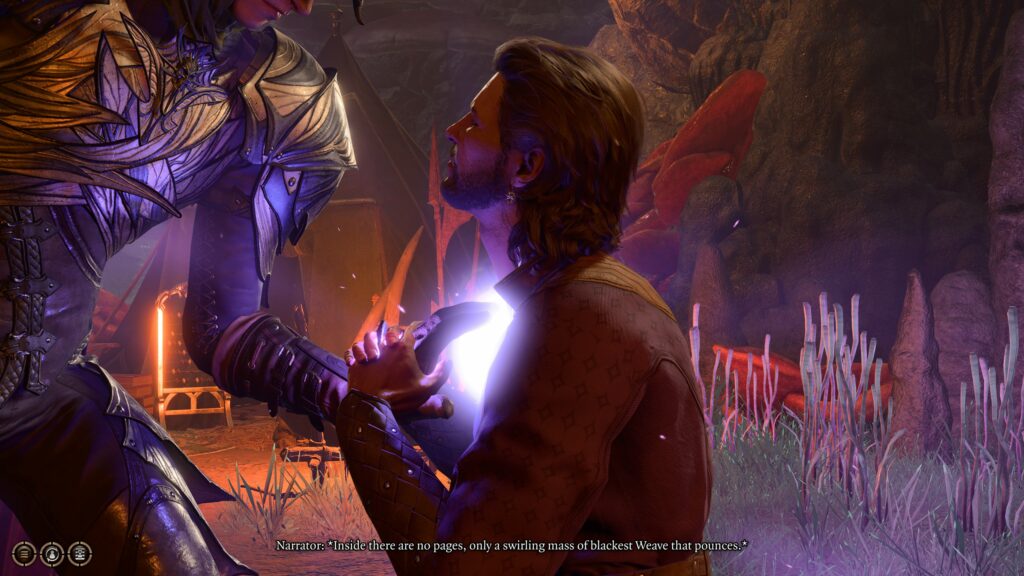

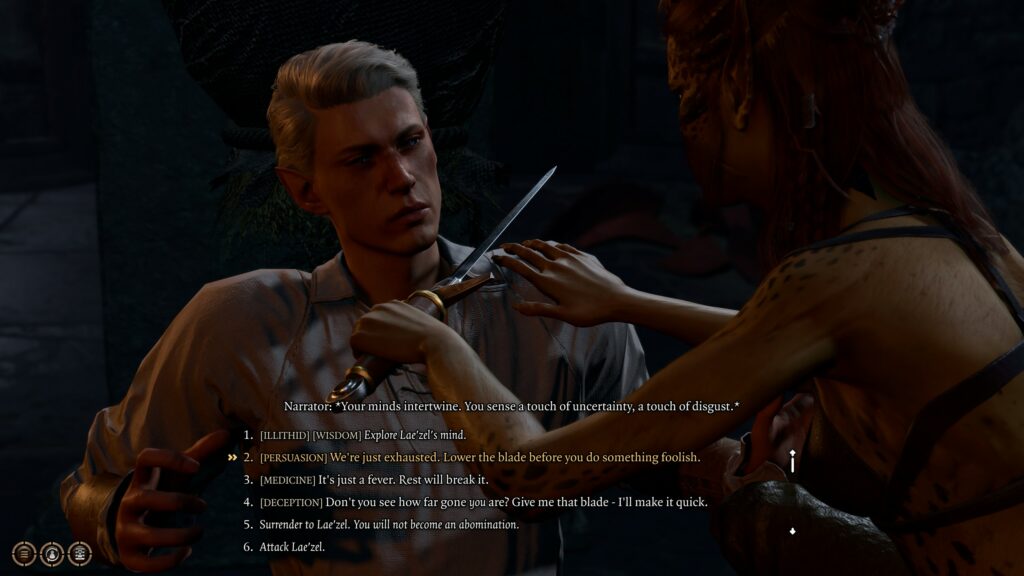
Baldur’s Gate 3 Combat and Encounters
Combat in Baldur’s Gate 3 also follows the basic rules of Dungeons and Dragons 5th edition with some minor modifications to make the game enjoyable in a digital setting. Many abilities that are in DnD that serve mainly a roleplay purpose received revamps and changes to make them more effective in the digital game. These changes are done nearly flawlessly to make you feel powerful and effective while keeping the spirit of the game.
Going into how combat works, it runs very similarly to Divinity Original Sin II and less so like Baldur’s Gate 2. As you explore the world, you may encounter hostile enemies and start a combat encounter. When the combat encounter starts, the game proceeds to roll initiative on each of the participants in combat, and this happens simultaneously. The order in which you start combat is determined by what each character rolls plus any modifiers from abilities, dexterity, and unique skills. This is essentially the turn order in which combatants take their turns. What I love about Baldur’s Gate 3 is that if multiple player characters act sequentially in combat, you may choose to activate them out of order.
As far as turned-based combat goes, while at times some lengthy encounters can drag on for a bit, for the most part, combat flows seamlessly and is quite action-packed. The adaptation from tabletop turn-based combat to a virtual turn-based strategy game is executed very well.
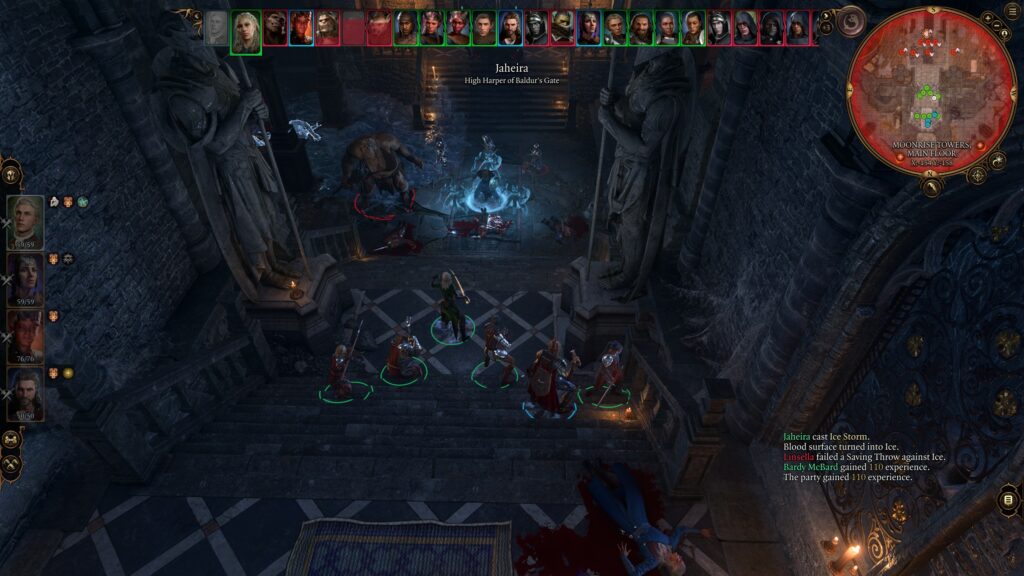
In combat each character starts with one action, one bonus action, and one reaction they can do in a round. Your characters can gain upgrades and equipment that may alter this as well. As a rule of thumb, actions are what your character will spend their turn doing, and bonus actions are little side things they can do simultaneously, and these are not interchangeable (unless otherwise stated). Actions are your attacks, your big damaging spells, or abilities that help you move faster or jump higher. Bonus actions are things like drinking a potion, specific smaller spells, or using a small item.
Reactions are abilities that are often triggered by an enemy or the environment that causes your character to respond. These can be toggled to activate automatically or to have a prompt pop up on the screen when relevant and it will ask if you wish to take this reaction. The most common reaction is an enemy leaving the melee range of one of your characters and your character utilizing an attack of opportunity.
When using an attack in Baldur’s Gate 3, you’ll get a nice little percentage on how likely your attack is to hit an enemy and deal damage. I like that the game gives you this information but would like it if it could provide a breakdown or an option to see what affects this percentage. As someone who plays Dungeons and Dragons, I understand the mechanics of my rolls to hit, attack modifiers and proficiencies, and take the enemy’s armor class or saving throws into account. However, for those who are not familiar, I feel this information would be quite useful and can help players modify their characters to be more effective in combat.
One thing I absolutely love about combat in Baldur’s Gate 3 is the environment. In Dungeons and Dragons, you often find yourself playing in a 2D setting, and unless the Dungeon Master goes out of their way to set up environmental hazards, it’s mostly pits, holes, and using your character’s weapons. Baldur’s Gate 3 does an excellent job combining the combat engine from Larian’s Divinity series and mixing it with DnD mechanics.



The simple addition of being able to set the ground aflame or making the surface slippery and knocking enemies prone is more than DnDs rules of “difficult terrain.” The environment rewards creative play of stacking objects, pushing enemies off cliffs, or utilizing traps that exist in the overworld. There is an iconic fight that takes place in a massive forge and some players could think “Can I use the forge as a weapon?”. These players are rewarded for their ingenuity because the developers at Larian know how players think!
Additionally, where fights are straightforward on the surface with each character having a base set of movement, an action, a bonus action, and a reaction, you can really explore and manipulate these to have creative encounters. You can throw teammates to cover extra distances. You can hide and set up traps before an encounter starts and ambush the enemy. You can even talk your way out of combat if you have the charisma for it.


My favorite personally is something I like to call the satchel bomb. Backpacks are common enough in Baldur’s gate three and can hold many items, and when you throw these backpacks from a sufficient distance or height, they break and the contents simply spill on the floor. I like to load one backpack full of explosives and poisons and throw it at a large enemy or group of enemies and ignite the pile of explosives to deal several turns worth of damage in a single action. These sort of mechanics really reward players for thinking and playing outside the box and really brings the spirit of Dungeons and Dragons to life.
Gameplay and World Impressions
As you go about playing Baldur’s Gate 3, you’ll find yourself playing in what are three distinct acts. Now as opposed to most CRPGs and even Divinity Original Sin II, once you leave an area behind, it becomes essentially blocked off. The game will however give you sufficient warnings when you are about to progress the game. I feel this is good because it gives Baldur’s Gate 3 something that Larian’s previous games lacked to an extent: lasting consequences. As you play through the acts, you are not just playing through an area, but also a point in time.
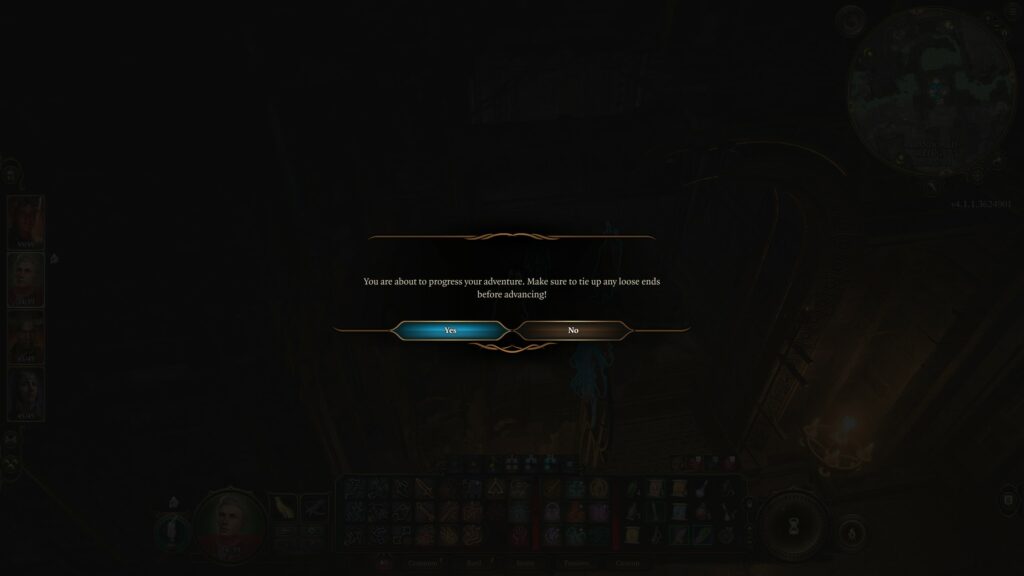
Act 1 of Baldur’s Gate 3 will have your party make decisions and solve dilemmas that exist, and subsequently, when progressing to Act 2 and ultimately Act 3, you will see the results and consequences of the decisions you made. One dialogue option at the very start of the game will ultimately decide the fates of several lives in Act 2. This leads to a massive amount of replayability as many times choices are not just one of two options. You can complete quests and objectives in a plethora of ways leading to a variety of different outcomes.
Each of the acts is very large with multiple explorable areas. There are several dungeons that really replicate the dungeon crawling puzzle experience of tabletop DnD and endless NPC encounters to really shape the story going forward. Many mainstays of DnD appear throughout the game, mimics and all. One thing I love the most about Baldur’s Gate 3 is how it replicated dungeon master shenanigans without a dungeon master.

In physical DnD, players will often see their game master rolling dice, or asking for perception or nature checks at random times. Players in turn become paranoid and spend ludicrous amounts of time doing nothing, looking for things that aren’t there, and generally making fools of themselves but still having fun. I love that in Baldur’s Gate 3, they accomplish much of the same effect and more.
Quite early in the game, I found myself in a dungeon where I suddenly failed a perception check. Except now there was no DM to tell me not to worry about it and I spent 10 minutes searching and clicking on everything looking for hidden traps or treasure. I did not expect to experience these “tabletop moments” in the game but absolutely loved that Larian Studios worked it in and really gave you the feeling you are playing dungeons and dragons.
When it comes to objectives, there are also several ways to go about completing them. At some point in the game, I needed a magical keystone to progress and I saw the NPC who had it. You could complete her line of quests, and acquire the key, or you could kill her and turn the fortress against you for the key. You could talk to them and persuade or intimidate them into giving you the key, or you could simply distract her and pickpocket the key like I know oh so many rogue players would do in real life. Baldur’s Gate 3 really lets you express your character and role-play so much more than I had expected to be possible.
Even when coming to bosses and major encounters, there are ways of talking them out of fighting, essentially beating them before it even comes to a fight. All these options even have different consequences down the line that can affect the story of the game. Baldur’s Gate 3’s reactivity to player decisions really makes the world feel alive and it responds to what you do.
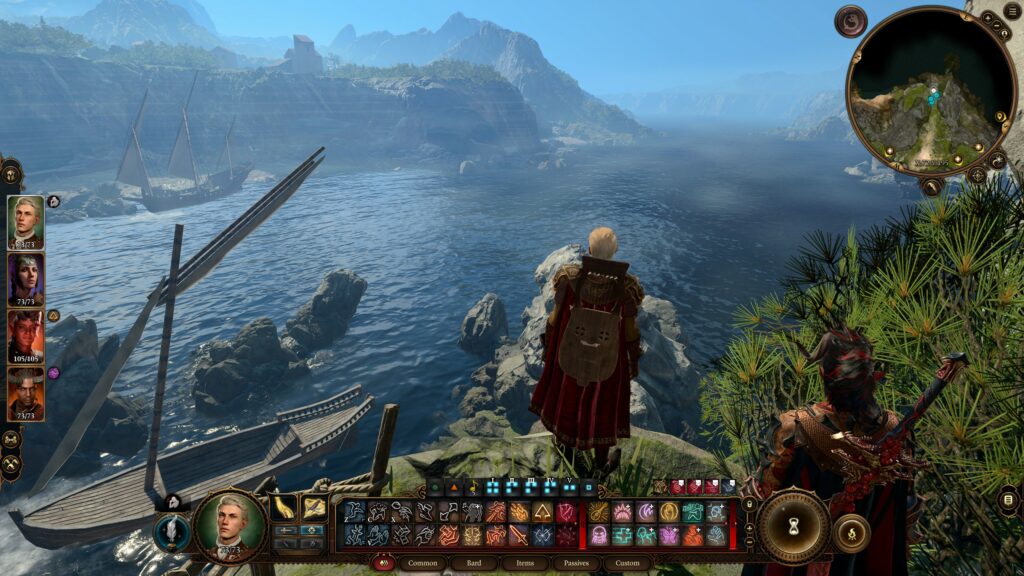

A Critical Success
Baldur’s Gate 3 I feel raises the bar not only in terms of CRPGs but of what single-player campaign games can be in the years to come. The game has a massive scope and the fact that they included hundreds if not thousands of decision tree branches is astounding. The ability to roleplay your character how you want to and the options it gives you really show the depth and passion that went into the game.
With all the good in the game, there are still some minor issues, mostly on the technical side and with the user experience. The game in the later acts does have some noticeable bugs, but even as I write this review they are being patched and fixed. Nothing game-breaking was found in my playthrough so far, but I have had some immersion-breaking moments of characters clipping through walls, being invisible in cutscenes, and dialogue options with typos or not being present at all.
The other gripe I have is with inventory management and how organizing the overwhelming number of items you have is tedious. I felt they could have added more hotkeys to make organizing and sorting easier.
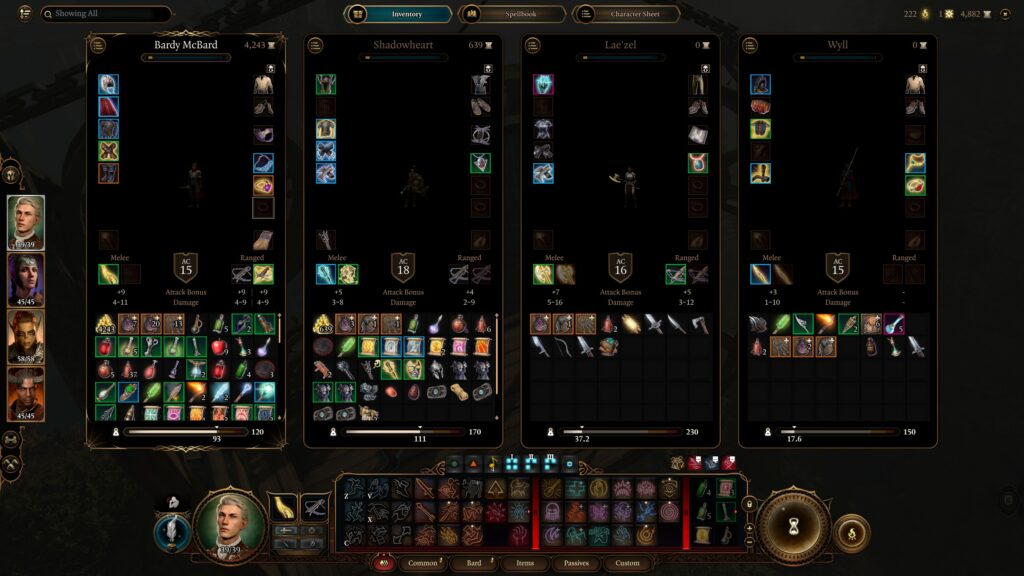
That being said, if the only issues one has with a game are its user interface and the occasional bug that is actively being patched, I would say the game is quite a success. As a fan of CRPGs, Dungeons and Dragons, or even a player who has not played either, I would call this game a resounding success and a must-try. The story is deep and the cinematic buildup moments had a lot of power behind them. The gameplay is fairly streamlined and engaging, and the amount of detail in the world of Baldur’s Gate 3 is inspiring. Baldur’s Gate 3 is a testament to what games can be, what video games can aspire to become as an art form, and a game I say is a must-play for anyone and well worth buying.

